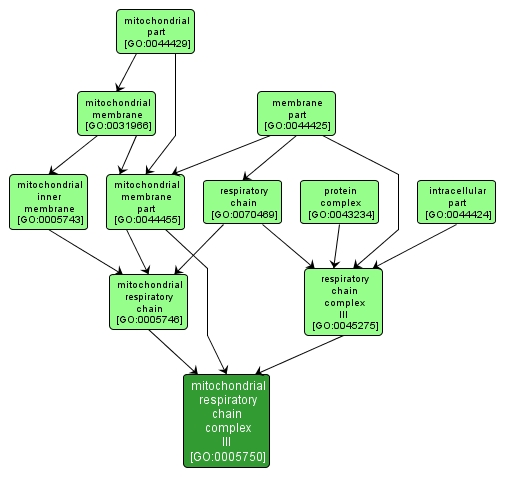GO TERM SUMMARY
|
| Name: |
mitochondrial respiratory chain complex III |
| Acc: |
GO:0005750 |
| Aspect: |
Cellular Component |
| Desc: |
A protein complex located in the mitochondrial inner membrane that forms part of the mitochondrial respiratory chain. Contains about 10 polypeptide subunits including four redox centers: cytochrome b/b6, cytochrome c1 and an 2Fe-2S cluster. Catalyzes the oxidation of ubiquinol by oxidized cytochrome c1. |
Synonyms:
- mitochondrial ubiquinol-cytochrome c oxidoreductase complex
- mitochondrial complex III
- mitochondrial electron transport complex III
- mitochondrial cytochrome bc1 complex
- mitochondrial cytochrome bc(1) complex
- mitochondrial ubiquinol-cytochrome-c reductase complex
- GO:0015008
|














